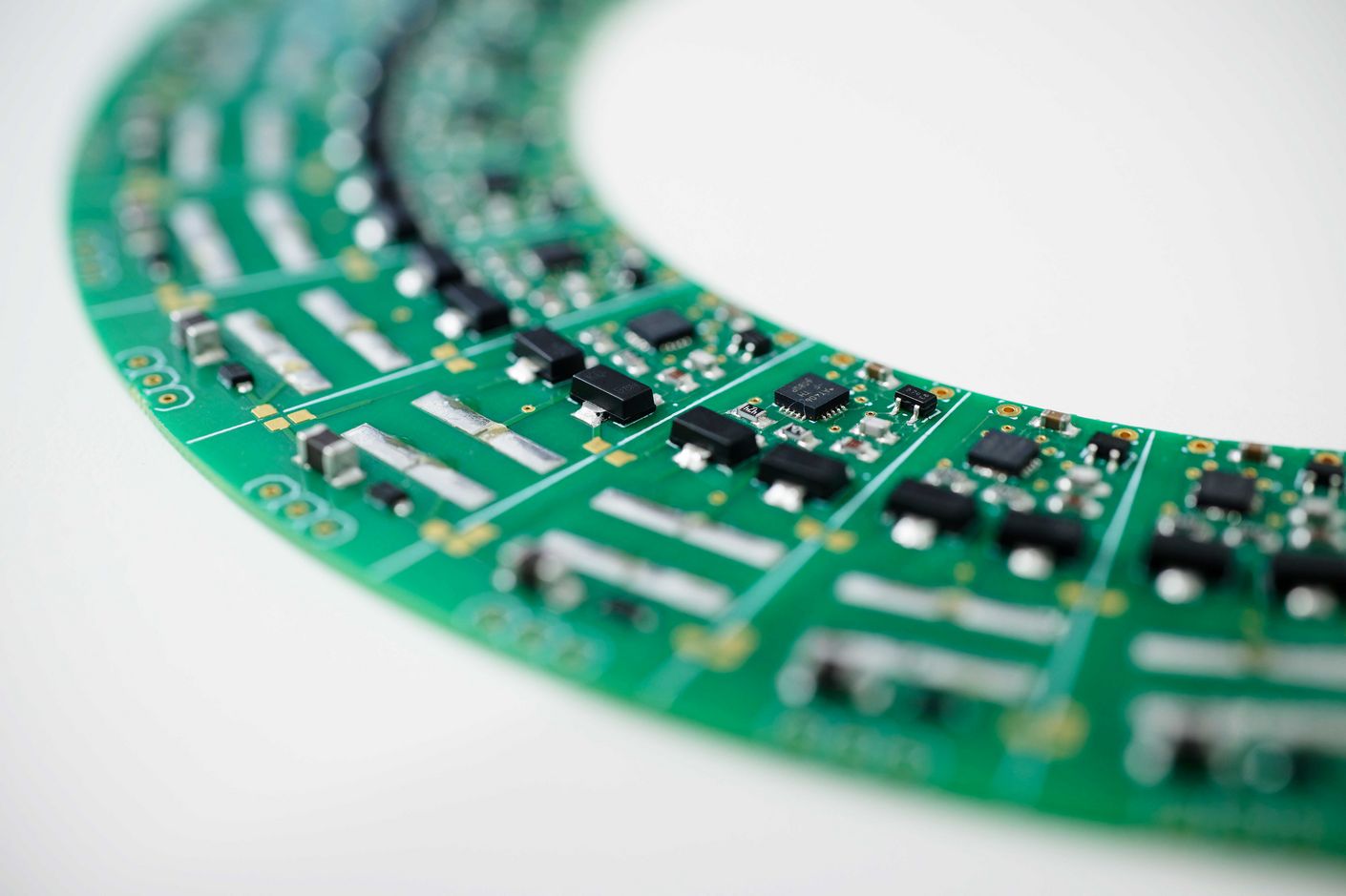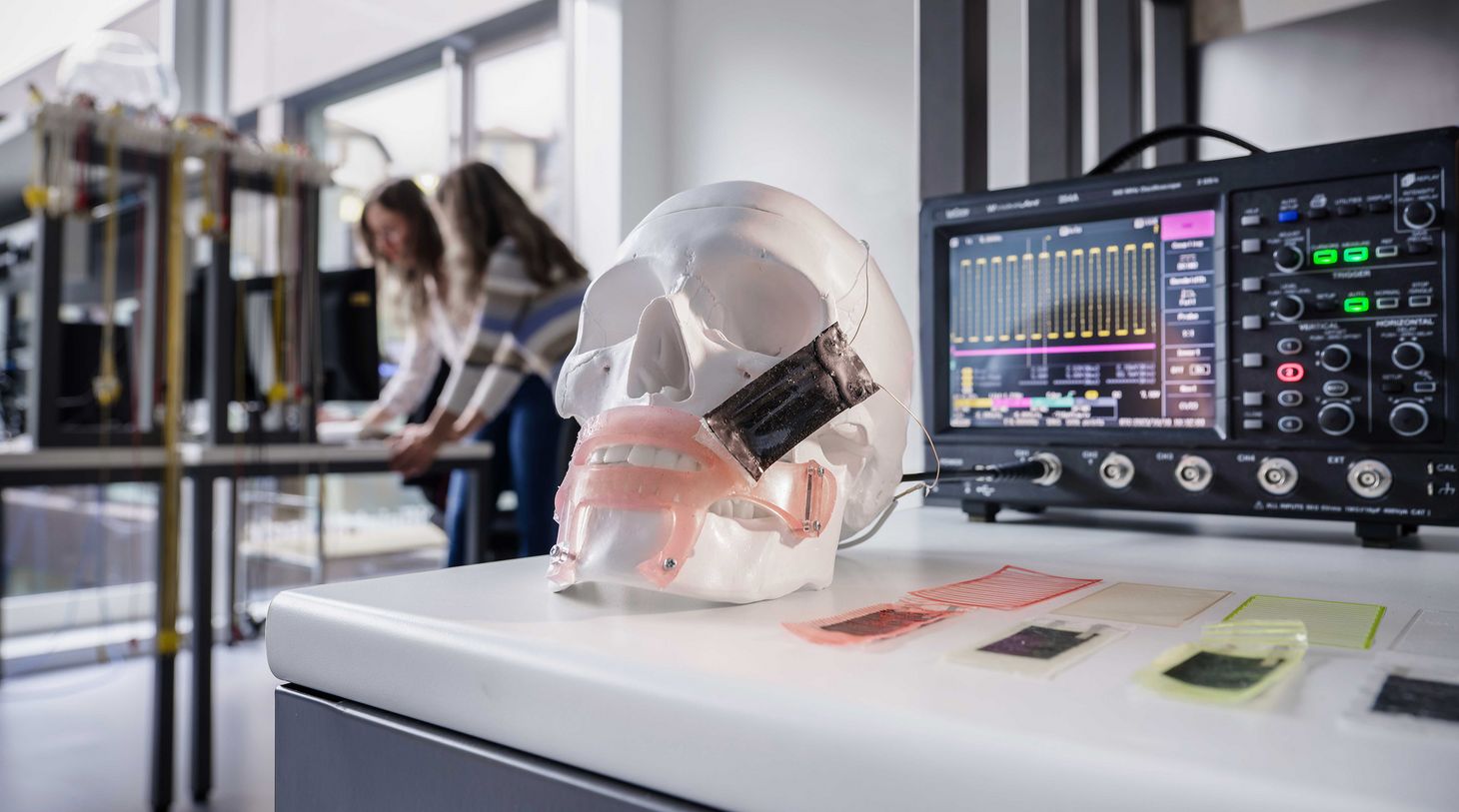
A workout for artificial muscles
Steady progress and new projects: researchers at the Center for Artificial Muscles in Neuchâtel can look back on a successful year. In collaboration with surgeons, they made significant progress in developing their innovative solutions for patients suffering from cardiovascular diseases, facial paralysis and incontinence.
Our muscles grow when we work them, a phenomenon that also applies at the Center for Artificial Muscles (CAM), located on the Neuchâtel campus of the École polytechnique fédérale de Lausanne. There, the team led by director Yves Perriard and managing director Yoan Civet work with such persistence and dedication that their projects are thriving in all regards.
First, there’s the flagship project: developing a battery-powered electroactive polymer ring to boost the aorta’s pumping capacity in cases of cardiac insufficiency. In autumn 2022, the researchers tested the system on pigs, and Yoan Civet reports that it increased cardiac functioning by up to fifteen percent—which is a threefold increase over earlier results.
More power or minimally invasive
Despite the advance, however, it’s still not powerful enough, as Yves Perriard explains: “At first, surgeons affiliated with the project wanted to improve the heart’s pumping capacity by twenty percent, but now they’d like to have thirty to forty percent.” One of the reasons for needing higher capacity is related to the method they’ve been using: an invasive surgical intervention in which the muscular ring replaces a section of the aorta, making an incision through the artery wall necessary.
To meet the new specifications, the researchers are working to make their artificial muscle more powerful by using a slightly thicker membrane and extending the ring’s length to measure twelve centimetres. “In lab tests, we attain a pumping capacity of twenty percent,” Civet says. This is very good news, especially as earlier tests have shown that the pressure change in the static lab unit is doubled when later used in a living organism.
But the researchers are also pursuing another avenue and seeking ways to place the ring around—and not in—the aorta. “This way, surgery would be much less invasive, and an improvement of 20 percent would be enough for an exterior placement,” Yves Perriard says. The initial results are promising in this project, too: in lab experiments, the researchers fitted the muscle around an artificial aorta, lending pumping capacity a significant boost. “We now want to test both of the systems in a pig,” Perriard says.

Helping children with univentricular hearts
The CAM team are also working on a second heart project, this time with the aim of helping children whose hearts have just one, rather than two, chambers. In these young patients, the body’s pulmonary and circulatory systems—containing both oxygen-rich and oxygen-poor blood—converge at the same place in the heart. Surgeons separate the two systems by implanting tubes that channel oxygen-poor blood returning from circulating through the body and organs into the lungs’ pulmonary system.
“Our idea is to replace this passive blood flow with an active process,” Yoan Civet explains. The researchers are now aiming to combine their soft, pliable polymer with blood vessels. “When we contract the softer tube and then open it again in a regular rhythm, we generate a flow—without using a valve.” Here, too, the initial results are very encouraging.
Growing bladder cell cultures
Another potential area of application for the artificial muscle is in the field of urology. The researchers are working to develop an artificial sphincter for the urethra to help patients suffering from urinary incontinence. Currently, they’re building an artificial urethra to test their idea in the lab. In a second part of the project, their aim is to create a platform for urologists at Inselspital Bern, enabling them to grow and study bladder cells. Yoan Civet explains that “it’s impossible to grow bladder cells in a Petri dish”, because our bladders expand when full of urine, and then shrink after we’ve emptied them. Bladder cells need this constant expansion and contraction to grow and later function properly.
Because the researchers at CAM believe the high elasticity of the mater-ial used in their artificial muscles could prove ideal for simulating this process, they’re now working on the development of a two-sided elastic membrane for growing the cell types in the bladder on either side.
The gift of a smile
The third area of work at CAM is facial reconstruction. Here, the researchers hope their artificial muscles will one day replace complex surgeries to trans-plant leg muscles into the cheeks of patients with partial facial paralysis. The Neuchâtel researchers recently published their first study on this endeavour, demonstrating that, when fitted near the mouth, their artificial muscle system is capable of quickly translating nerve signals into movement. They hope this application could one day help affected persons smile again, and more studies are currently being conducted on a skull model. All in all, there’s a lot to keep the team at CAM busy.







